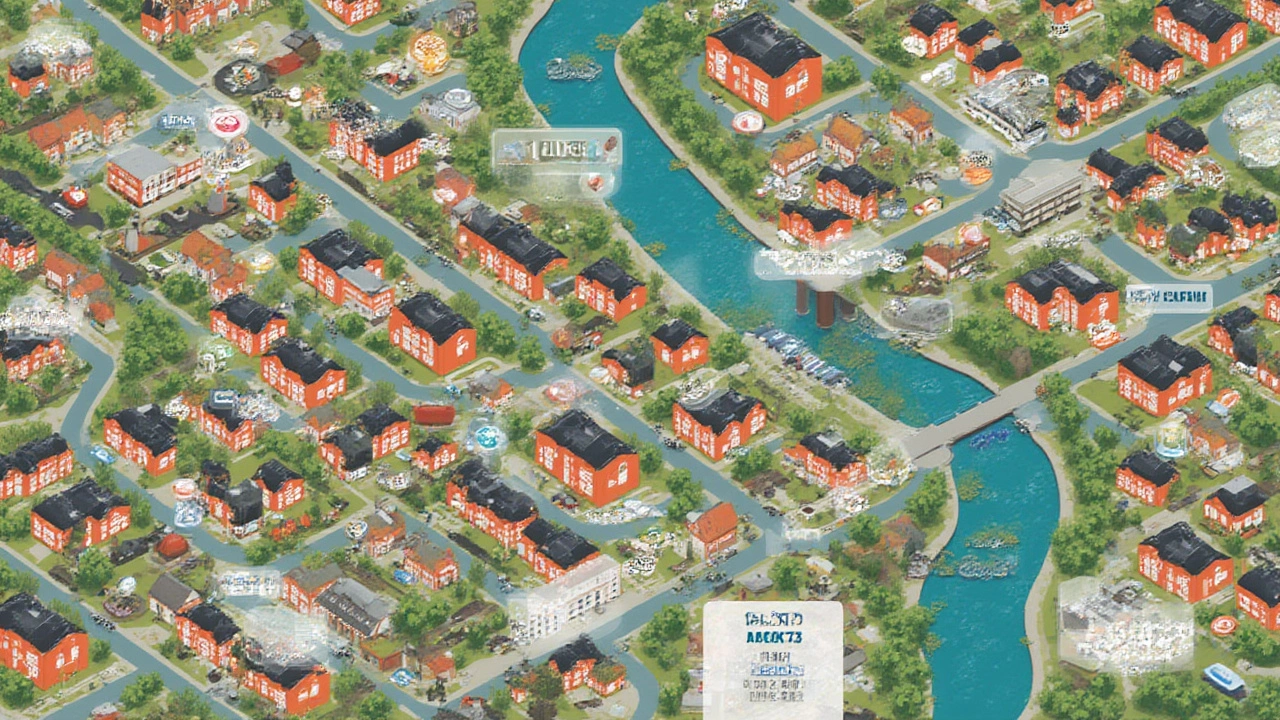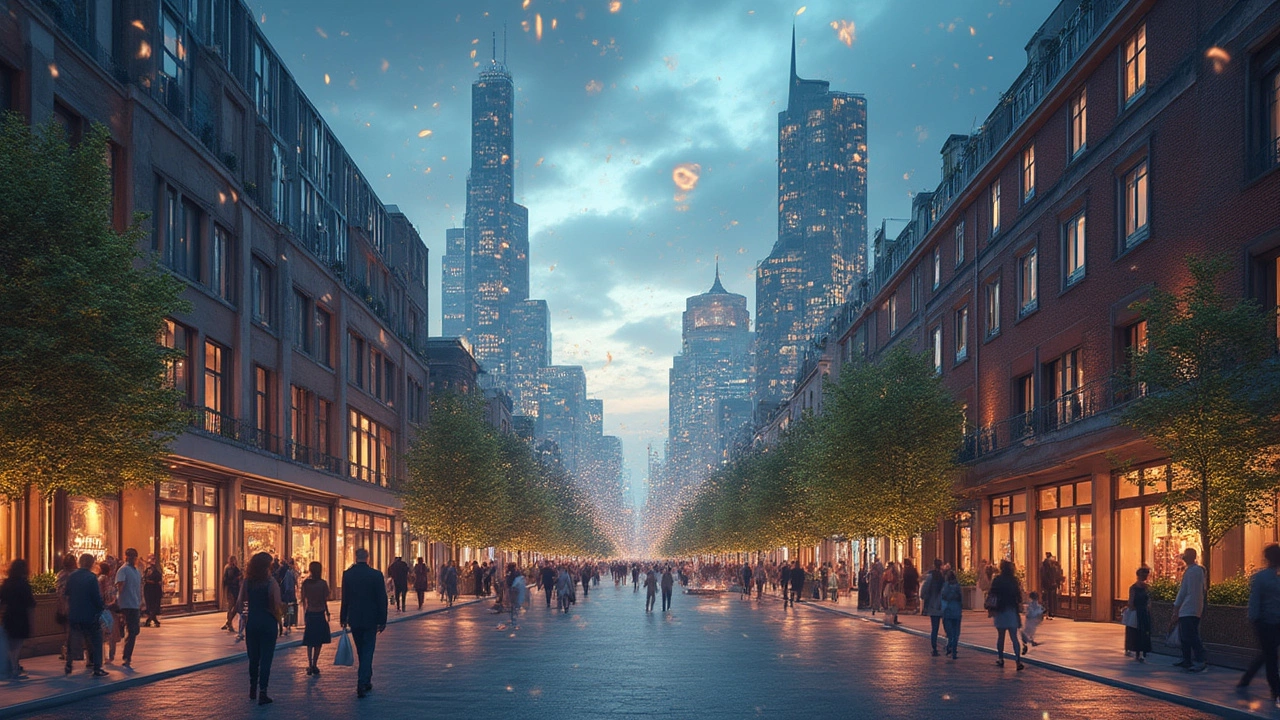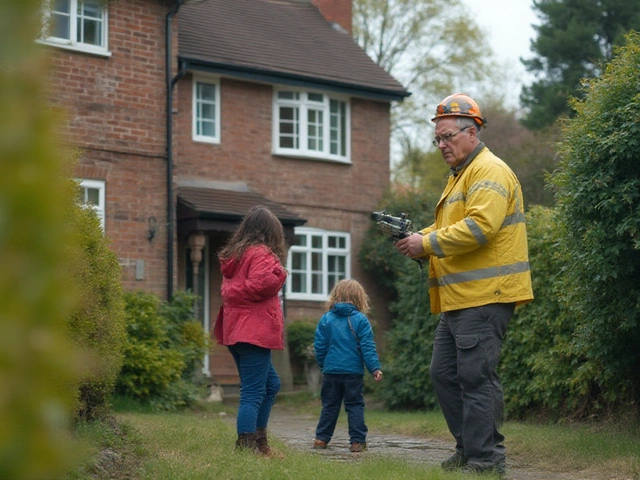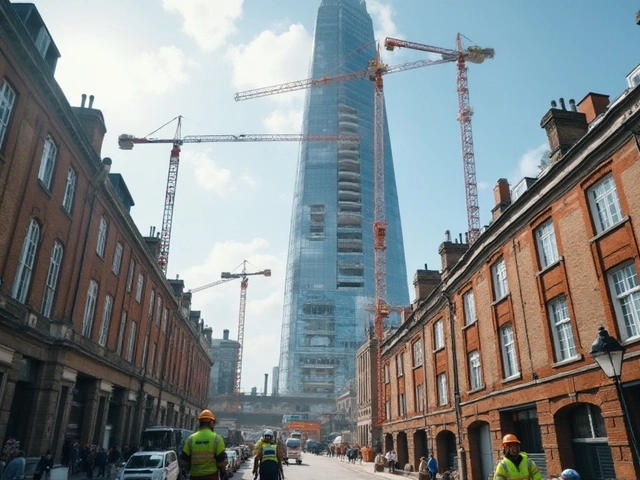Picture this: Someone spends millions on an office building, while someone else splurges on a simple family home. Why do prices swing so wildly between commercial and residential properties, and what’s actually more expensive? Most people assume 'commercial' must mean 'pricier,' but the real answer isn’t that simple. Costs often flip depending on where you look, what you’re buying, and the headaches (or headaches averted) that come along with each option. You can’t judge just by glancing at the square footage. Let’s get real about what drives these numbers sky-high, and why some tricks of the trade can help you make smarter calls in either market.
What Drives the Price of Commercial vs. Residential Properties?
The first thing you need to know: different forces are at play when you compare commercial with residential properties. When you hear 'commercial property,' think offices, shopping centers, warehouses, and hotels. 'Residential' means homes for people—single-family houses, condos, apartments. These aren’t just different buildings. They’re built for totally different uses, and that changes everything.
Let’s break it down. Residential properties mostly get their value from location, school zones, and—let’s be honest—curb appeal. Commercial values, though, center on how much income the building can generate. So that small strip mall on a busy corner? If each shop pays hefty rent, the value shoots up fast. On the flip side, a huge, beautiful house in a boring neighborhood could go for less than expected. That means the average prices shift in surprising ways.
Construction costs affect both sectors, but not evenly. According to the National Association of Home Builders, the average cost to build a new single-family home in the U.S. in 2024 was around $392,000. Meanwhile, a modest commercial property (like a small office) could reach upwards of $500 per square foot—quickly dwarfing residential numbers. Yet, a run-down motel might sell for less than half the price of a brand-new McMansion. Land costs add another wild card, with zoning sticking its nose into all decisions.
Financing also plays a big part. Banks see risk differently. Residential loans? Usually simpler, with smaller down payments. Commercial lending often demands a higher credit score and bigger down payment. Interest rates are higher too—a logical bump since a commercial deal involves more risk for everyone involved. Stick that on top of costs for property inspections, appraisals, and ongoing maintenance, and you’ll see how commercial properties can easily become pricier up front and over time.
Regions matter, too. A building in Manhattan will dwarf costs in Phoenix, but so will a Seattle condo compared to a Texas warehouse. The quirks of local markets and regulations can rarely be ignored. Taxes, insurance rules, and even utility rates can mean the same type of building costs way more in one state than another.
Operating Costs: The Hidden Price Tag
The sticker price is just the beginning. Both residential and commercial owners face a ton of ongoing expenses. But here’s where things often tilt in favor of residential owners—operating costs for commercial buildings stack up fast. Think janitors, security, groundskeepers, specialized HVAC repairs, and more certificates than you ever want to deal with.
Commercial tenants usually sign what’s called a triple net lease, meaning they cover most costs: property taxes, building insurance, and maintenance. Residential tenants (unless you’re running a fancy apartment complex) typically just pay rent and utilities. But even if you’re a clever commercial investor offloading expenses, you still wrangle more red tape—annual fire inspections, ADA compliance, business permits. It’s an endless checklist.
Take property taxes as an example. In 2023, Chicago’s commercial property tax rates were nearly double those for residential. The same held true in many other cities. Now, add insurance into the mix. Commercial property insurance can easily run $5,000 a year for a plain office building. If your building has public spaces, elevators, or high-value tenants, tack on thousands more.
Repairs and renovations can become a black hole in commercial property. Elevator breaks? Try finding an affordable mechanic. Roof leaks in a warehouse? That cost gets a couple of extra zeroes. With residential homes, replacements are usually simpler and cheaper. Think of a leaking faucet in a townhouse compared to the pipes bursting in a 10-story retail building.
The power bill isn’t even close. Heating and cooling a small house is simple. Keeping a hotel at a comfy temperature? That’ll make your eyes water when the electricity bill comes in. Plus, commercial owners have to stay ahead of safety upgrades as new laws drop in. All this means that while you might find a cheaper commercial property sticker price in some situations, the total price tag over time often winds up much higher. Smart buyers budget for surprise repairs, building upgrades, and the kind of insurance regular homeowners never think about.
| Expense Type | Residential (Annual, Avg.) | Commercial (Annual, Avg.) |
|---|---|---|
| Property Taxes | $3,000 | $7,500 |
| Insurance | $1,250 | $5,000 |
| Maintenance | $1,800 | $8,000 |
| Utilities | $2,200 | $12,000 |
| Compliance/Permits | $0–$500 | $3,500+ |

Investment Returns: Which Pays Off?
Let’s talk about something nobody tells you: Sometimes paying more is actually smarter—if the returns outpace the expenses. People jump into commercial properties because, for all the costs, the potential payoff can be huge. The rental income for a well-leased office building, for example, can blow residential returns out of the water.
But don’t get it twisted: risk follows those rewards. Vacancy rates in commercial are famously volatile. When COVID-19 hit in 2020, office buildings in hotspots saw average vacancy rates jump over 15%, while apartment vacancy rates barely moved past 7%. Empty offices = no cash flow, but a single-family home is more likely to keep a steady tenant.
Appreciation is another curveball. Residential homes see steady value growth tied to neighborhoods and demographics. Commercial properties experience boom or bust based on whole industries—think about what happens when a major employer leaves town, or when remote work becomes the norm. Suddenly, that gleaming glass tower downtown is a liability, not an asset.
Every investor calculates their 'cap rate'—the rate of return on investment after accounting for all costs. A typical cap rate for residential rentals ranges from 4%–6%. Commercial properties can shoot toward 8% or even 12%—but only if everything goes your way. Factor in the bigger upfront payment, higher loan costs, and ballooning maintenance, those numbers start to get a little less shiny.
On top of that, selling a commercial building takes longer and is more complex. Supply and demand aren’t as simple, and buyers often want to see books, leases, and proof of income—stuff a residential buyer never asks about. As a result, your cash might be tied up for years, compared to flipping a house in a hot market within a couple of months.
Regulatory Hurdles: What’s It Like to Own Each?
If you think dealing with your HOA is tough, commercial regulations will make your head spin. The amount of local laws, permits, inspections, and codes increases tenfold. Need a new sign for your business? That’s a permit. Want to remodel a unit in your office park? Plan on months of waiting, mountains of paperwork, and probably a hefty fee to grease the wheels. Cities love to regulate anything that brings in business taxes, so every local government layer piles on its own requirements.
Residential rules are simpler: pay attention to city codes, make sure your smoke detectors work, and avoid annoying the neighbors. Most of the time, changes just need a quick permit or inspection. You can rent out a home with little more than background checks (and maybe, in renter-friendly cities, a license).
Commercial landlords have a whole different set of rules. They must follow OSHA safety guidelines, Americans with Disabilities Act standards, and must apply for and renew business licenses regularly. Some cities, like San Francisco and New York, inspect high-rises annually, while others levy fines for any hazard from cracked sidewalks to dusty vents. If you own a restaurant space, food safety inspections add another headache.
Then there’s environmental and historical preservation rules. Try adding a rooftop deck to a historic hotel—it can invite a review board and angry neighbors in period costumes. This doesn’t just add expense, but also time. For investors needing rental income now, that could be a deal-breaker.
One tricky point: liability. If someone slips on your single-family home’s icy steps, you call your insurance company. In commercial spaces, exposure multiplies—think deliveries, customers, employees, and tenants. Lawyers and courts can get involved quickly in any incident, and verdicts can run much higher.

Smart Strategies and Tips When Deciding Between Commercial and Residential
If you’re trying to decide between investing in commercial or residential real estate, here’s what the pros focus on. Don’t just glance at sticker prices—do a full financial write-up on both short-term and long-term costs. Forecast property taxes, estimate insurance hikes, and always assume you’ll face bigger repairs than the inspector finds. Seriously, factor in a rainy day fund even if you think you won’t need it.
For commercial, get granular with the income streams. Office or retail leases often lock in tenants for 3–10 years, giving stable income if you pick the right area. But always check vacancy rates and trends—those big empty malls tell you not everywhere is thriving. Vacancy insurance is a thing, but don’t rely on it to save you.
On the residential side, look at local rent controls—cities like Los Angeles and New York have strict limits, but places in the Sun Belt might let you raise rents as needed. Understand maintenance costs by asking recent landlords or hiring an experienced property manager for fact-finding. Homeowner associations can sneak in surprise fees, so never gloss over their rules.
Leaning commercial? Nail down your financing before you even consider making an offer. Lenders look at both your credit and the income history of the building. Unlike residential deals, where a steady job and savings will do, banks want you to prove a business head—and might sometimes ask for your business plan and a portfolio of previous deals.
Whether you prefer sticking with *residential property* or scaling up to commercial buildings, always keep tabs on subtle shifts in the market. In 2024, for instance, migration out of big cities into smaller metros meant homes in former 'sleepy' suburbs started closing for millions, while inner-city office towers lingered on the market. Trends like remote work, e-commerce, or changing tax laws keep shaking up what’s smart—or risky—to buy.
Ask experienced owners what surprised them about each type. The best advice? Don’t fall for the flashiest price or biggest returns. Smart investors calculate not just what they’ll make, but also what it will cost to hang onto a property—even during the rough years.
The bottom line: Commercial properties are usually more expensive on the front end and riskier to operate—but can pay off big if things go right. Residential is typically easier and cheaper to get into but offers more steady, slow-growing returns. Each path fits a different kind of risk tolerance and wallet size. Whatever you pick, do your homework—no shortcut beats working the numbers with a skeptical eye (and maybe a stiff drink nearby).





